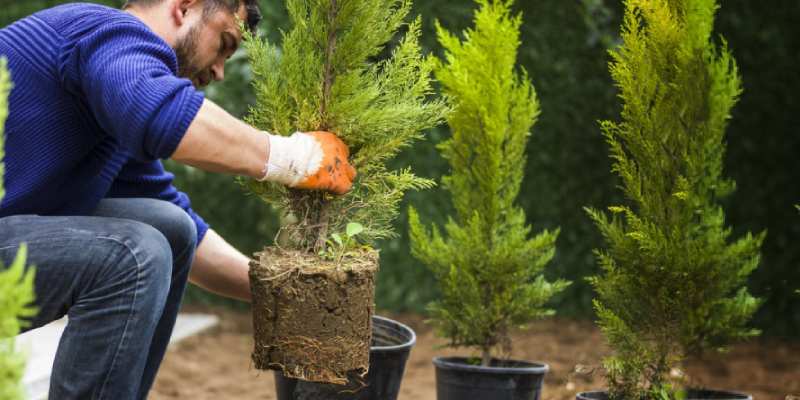
You’re packing up all of your things to move, including yourself, your family, and your pets, but what about your garden? It’s not only possible to move some of your garden with you, but it may be preferable – after all, similar to staging your home on the inside you want to keep things as simple as possible for potential buyers. Below are some tips on how you can bring your garden with you during a move, if you’re so inclined to do so, the good news is, it’s doable!
Assess your options
First things first, there are some plants that are just not movable at all. These are trees with deep roots, and along the same lines, trees that are subject to zoning laws.
A lot of times it is illegal to trim, cut down, or otherwise tamper at all with trees in your front or backyard based on specific zoning laws. Find out what those laws are before you begin transferring anything out of your garden. You can look up zoning laws based on your city and county.
For instance, if you are moving into a home in Miami, zoning laws generally are very strict about trees, their placement, and whether or not they can be trimmed or moved. Find the respective zoning laws as they apply to both your old and new property and adhere to them strictly.
Start uprooting
It’s a fairly fitting and symbolic thing to take the time to literally “uproot” your garden and move it with you to a new home. When you begin to do this, make sure you have the proper accessories in hand. You will need pots that will fit each plant comfortably and some fresh dirt to make sure they are potted correctly in each pot.
Clay pots with clay trays on the bottom work well here. When you move and re-plant them, you can re-use these pots for other garden fixtures in your new home.
Be careful with the roots when it comes to handling them but not when it comes to watering them, especially if you are moving in the heat of summer. Any exposed roots for any amount of time are at the risk of killing a plant – water is key here! You can even purchase burlap to wrap around roots of plants and vegetables and then soak the burlap in water so the roots stay hydrated in transit.
Time it well
Uprooting and subsequently replanting your garden in its new location should be one of the last if not the last and also the first thing you do both while exiting your existing home and arriving at your new home.
The longer you take to both uproot and replant, the less likely your plants are going to survive the move.
A good tip for the final step is to water the holes you made in your new property for your plants before putting them in the ground. This gives them a bit more of a chance to stay hydrated and take root in their new home.
While moving has a lot of moving parts to tend to in general, it’s important if you are going to move your garden that you water your plants in their new home every single day until its clear they are growing strong and have taken root. Once they are planted, as well, give them a good run with cool water and provide a little bit of shade for them if you can.
Moving a garden is a great idea when it comes to moving homes, but you need to make sure that you don’t take any trees or plants that are off limits, or, that you end up losing some of your precious plants in transit. Another thing to consider is making sure whatever you do uproot becomes addressed aesthetically before you begin showing your home. Keep these tips in mind when you are transferring your garden from your previous home to your new home and you’ll be happily rooted in your new property with your plants in their new spots as well in no time.
